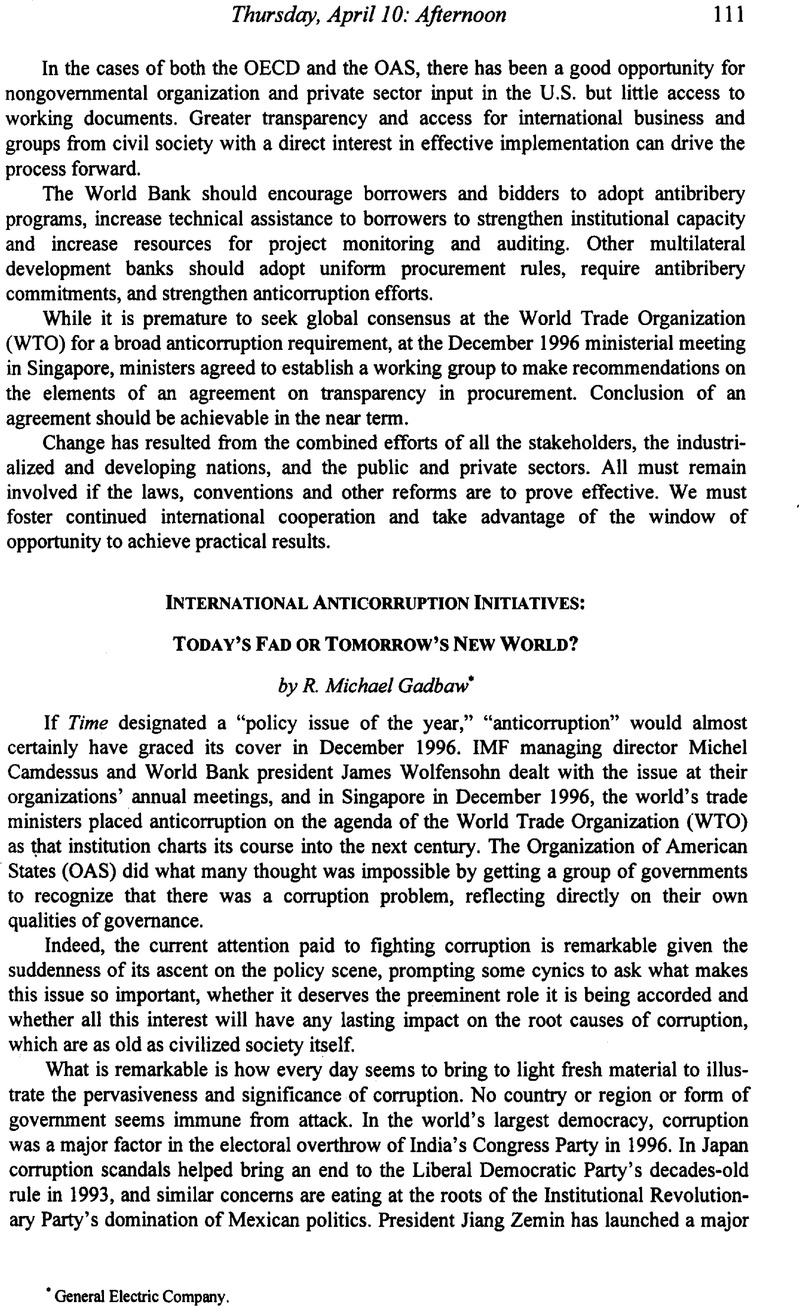No CrossRef data available.
Published online by Cambridge University Press: 28 February 2017

1 The Japanese government has also decided to propose legislation criminalizing foreign bribery. Nikkei Fax, 5 Nihon Keizai Shinbun 942 (1997).
2 Ron Brown, The National Extort Strategy: Fourth Annual Report to Congress by the Secretary of Commerce 113 (1996).
3 The difficulty of taking on petty corruption is compounded by the fact that in many countries thousands, even hundreds of thousands, of clerks and bureaucrats are woefully underpaid but make up for the lack of salary through illicit payments. To eliminate this well-established system would mean laying off huge numbers of people and facing a serious social and political backlash for those affected, or driving overburdened government budgets further into deficit.
4 See Vito Tanzi, Corruption, Governmental Activities, and Markets, IMF Working Paper WP/94/99, at iii.
5 See International Bank for Reconstruction and Development, Bureaucrats in Business: The Economics and Politics of Government Ownership (1996).
6 Hilton Root, Small Countries, Big Lessons : Governance and the Rise of East Asia (1996).